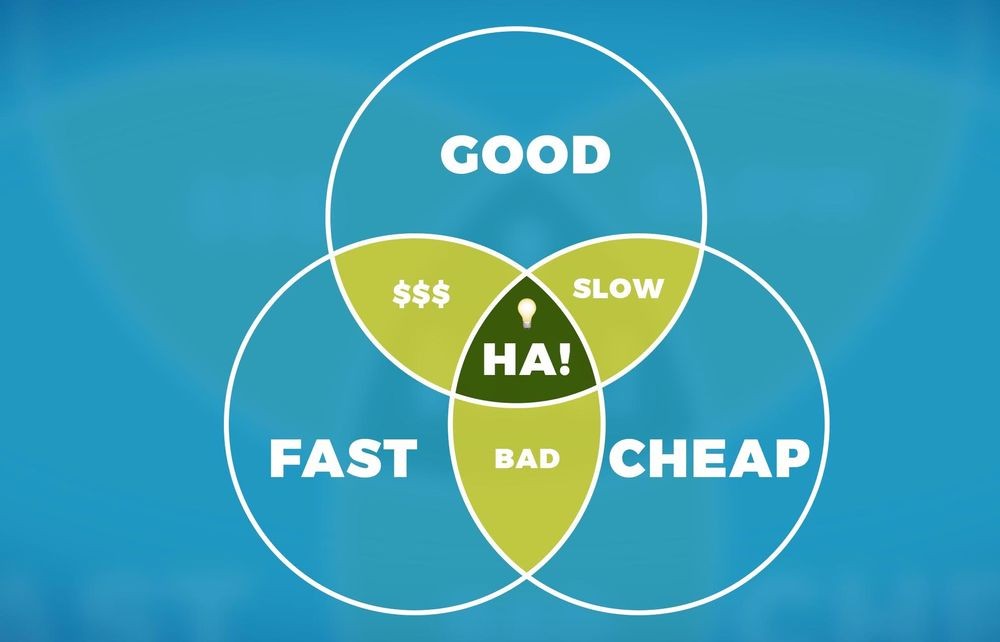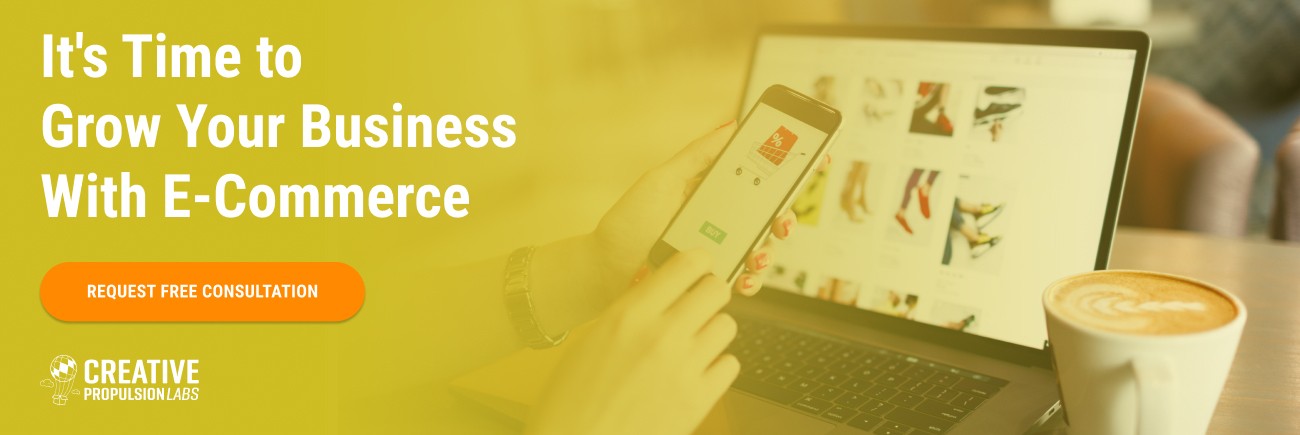In today's market, with the increasing importance of design, how should a marketing agency balance design and budget? And how do you manage client expectation for both while still delivering the best results?
Let's begin with a case study. A great example of the importance of design today is the new iPhone X, one of the most intensely designed products to come out of Apple, one of the most design-driven companies on the planet. Apple has changed the world, and profited immensely, because of design.
Here's the kicker though: If you want to really design like Apple, you need a budget like Apple's too. The company known for its brilliant and beautiful pieces of technology designed to the extreme, is also, literally, the most valuable company in the world. In May, Business Insider reported that Apple had broken its own record as the most valuable publicly traded company ever with a stock price of $149.06 and a market capitalization of $776.6 billion. As of this writing, the stock had trumped itself yet again, at $153 a share. And Apple could someday be the world's first trillion dollar public company. From the engineering to the user interface and a product's physical aesthetics, the gleaming stores, the software, and the corporate headquarters, everything done by Apple is designed to an absolutely extraordinary degree, and they can easily afford it too.
So, if you're not the likes of Apple, how do you balance a need for good design and budget-conscious business goals? Where is the line? When is design more important, and when is budget?

You may be familiar with a common Venn diagram of client expectations. As we wrote in How Marketing Agencies Balance Price, Quality & Speed:
Logic dictates that a good marketing company or a good freelancer can complete work two of three ways: the work can be fast and cheap, but maybe not your shining moment as a creative; the project can meet the client’s every specification and be a perfect example of your best out-of-the-box thinking, but that probably won’t come cheap. Last but not least, your client can sacrifice time for strong creativity. Agencies and freelancers should know how to walk this critical psychological tightrope.
The spot in the middle? Well, an economist once said "There's no such thing as a free lunch." That's your 'free lunch.'
So, how does one balance design and budget, really? Creative Propulsion Labs' Creative Executive Officer Adam Mizrahi's opinion on the topic is concise and straightforward:
"Budget drives everything after you get to a certain minimum of design quality."
Design is important, but sometimes budget just has to be more important, and even then a minimum baseline of design for usability, aesthetics, and etc. has to still exist. Why? One reason is the rise of a demographic which unsurprisingly is just beginning to dominate most market sectors and many aspects of the entire economy. This group, Millennials, are dramatically more influenced by good design than their forebears.
In 2013, for example, when writing about how the 'generational priorities' of millennials will define the new economy, Fast Company said, literally, "#1. Design or Die." So we design. A quick Google News search for 'millennials design' brings results as niche and diverse as how to design hotels for millennials, a Walmart-owned, design-savvy grocery brand for millennials called Jet, and of course the inevitable backlash. A millennial journalist spent an entire article cringing at how an Air France subsidiary branded as an "airline for millennials" tried and failed to get it right, and even a publication as highbrow as the Harvard Business Review has carried the headline, back in 2015, 'Stop Designing for Millennials.' Like it or not, however, millennials define design today.
However, Mizrahi notes, when getting into the details, it's more complicated than just that. The minimum of design quality may easily fluctuate depending on the targeted audience, like millennials for example, or the purpose of a project. He continues:
For example, when brand building, 'design' is more important. For conversions—establishing a relationship with a visitor to your site—however, 'design' is not so important. Or, if you're creating a quick test, like a quick email flow for example, or a social media test... design can probably be forgone to some extent. If the test is a success and engagement is satisfactory, then design can be improved.
Think about first impressions. A study published at entrepreneur.com examined common website elements which made early impressions on their visitors. The results show immediate effects of well-designed elements, like a logo, as well as more utilitarian things, which can take just as much time to create. Of course, 'utility' is a major factor in design. And those first impressions are important, although perhaps a little more important or a little less important depending on the purpose of the website. After all, according to the same article:
It takes less than two-tenths of a second for an online visitor to form a first opinion of your brand once they've perused your company's website, according to researchers at the Missouri University of Science and Technology. And it takes just another 2.6 seconds for that viewer's eyes to concentrate in a way that reinforces that first impression.
First impressions are crucial, of course, but a website used only to make a first impression, like one focused on lead conversion, is very different and requires less 'design' than a site that will be used by a consumer on a longer basis. A site focused on lead conversions, where the goal is to catch the consumer's attention and interest really just long enough to get their email address on the mailing list, is all about the message. "Sign up here because my product will make your life better," not "because my font selection is sublime. Designing a 'conversion' website with the level of refinement needed for a content-based site, like a news publication, social media platform, web application, or online retail is just unnecessary.
Good design is also important in the lifestyle arena, which we work in at CPL, as lifestyle is often heavily content-oriented. When working in lifestyle or related categories, you should do everything possible to prioritize design over sticking to a strict budget, because in the longer term that will always pay off. When working with advertisements, on the other hand, take a more cautious approach and make sure to do market tests on your message before going crazy with design. The best design can be ruined by an embarrassing gaffe in the promo's verbiage. By picking the wrong word, or making a well-placed typo, a poor message easily ruins a great design.
Timing and context are vital too. When creating a logo for an insurance adjuster after a hurricane, the design is of little importance. When creating a logo for a music label, which will naturally appear everywhere, on the other hand, the design is much more important. Design is important for websites, sales brochures, print and digital advertising campaigns, and sometimes emails and newsletters. If the product is strong enough and your clients or customers are loyal enough design can even sometimes be almost completely forgone, but this is industry specific. Great examples of this are often niche products with 'cult-like' followings or handmade goods produced in small batches.
When you're designing anything it is important to understand your budget. Usually, your budget will let you know how deep to immerse yourself in the design process, and how much time you can commit to doing so. When investing in a product make sure to invest proportionately in design to ensure your investment. A great idea or product with a horribly designed marketing campaign can die before it even takes off.
Budget impacts far bigger things too. Good design is good business but the financials have to make sense. And there is a natural limit. After a certain point, overextending your budget on design has diminishing returns, eventually blowing your return on investment. When manufacturing millions of iPhones for an eager market, Apple has the resources to design a custom edge-to-edge OLED screen with 3D-sensing facial recognition camera that requires a large 'notch' in the screen to accommodate it. The camera and 'notch' were reportedly so complicated and expensive to produce they held up the production and release of the entire phone:
TrueDepth camera may be main production bottleneck of iPhone X ramp. The 3D sensing (TrueDepth camera) on iPhone X is composed of a structured-light system, time-of-flight system and a front-facing camera, which represents a far more complex structure than those of rivals. It will therefore be harder to achieve mass production. While we project iPhone X will see output ramp up meaningfully in mid/ late October, tight supply may only start to ease in 1H18F due to strong demand.
Only a company like Apple and not the vast majority of other companies out there could shrug off a production issue like that.
Are you or your clients affording enough time and resources to the design aspect of a project? In our experience at Creative Propulsion Labs, we always invest a little more time and perhaps some additional resources in the early days of working with a new client or doing a new project. We have found that doing it right in the beginning inevitably pays off dividends in efficiency for the clients and ourselves in the longer term. To economize, another option is to create easily reusable, adaptable, and standardized materials and tools to be utilized many times over. But economizing, of course, can only go so far.
If you don't have what you need to execute the most efficient nut effective of design, then negotiate! Negotiate with determination. Negotiate with gusto. Remember that designing can ensure the longevity of that work. A great product's sales can be ruined by extremely poor packaging. A great online service can be killed by a confusing website.
Marketing teams should not be afraid to ask for the budgets that they need and to make it clear they don't have the resources if they say no. Remember that good design can ensure the longevity and relevence of a project. When negotiating for more time, more resources, or more money, first you are asking your client to invest in their future with a well-designed project that is more effective and enduring. Secondly, and no less importantly, you are investing in your future by insisting on strong design standards for your own work. You are elevating you and your organization's reputation and providing portfolio materials to justify to future clients that continued level of design and its associated costs. Be honest with yourself and direct with the client about what you want to get and what you expect to get (often two very separate things) when you're going into the negotiation. Decide on your priorities and, when trimming the fat is necessary, be clear if the design phase has to take a hit, or something else. And be clear to the client about just what aspects of the project will change or suffer or how they will be affected.
Again, referring back to How Marketing Agencies Balance Price, Quality & Speed, when discussing the intersections of the 'Fast' and 'Cheap' slices of that familiar Venn diagram:
Does the client wants a project completed in exactly 24 hours, right before their CEO gets on a plane?
To give your clients what they need, be very direct about what you or your company can or cannot deliver. There’s nothing worse than overpromising a perfect, brilliant, fast product, only to realize that it can’t be realistically completed within the projected deadline. Before you know it, you’re writing the dreaded late night email to your client explaining why they won’t have their project before the CEO boards on that morning flight. When you wait until the last minute to manage a client’s expectations, they may wonder if you can be trusted to complete assignments at all. It also creates a dreaded negative interaction.
It's important to remember that sometimes our level satisfaction is tied to our emotions or how "something feels". Avoid overpromising and your are more likely to come out as the hero. Manage client expectations clearly and communicate in advance to increase the chances of a positive interaction.
So, yes, good design is important. Very important. However, in many situations, it is imperative that at least a general baseline of usability, functionality, and aesthetics needs to be met, and the rest might just be icing on top. And budget determines just how much of that icing you get to slather all over your latest design creation.
"Beyond an essential minimum of design quality, budget drives everything."—Adam Mizrahi, CEO of Creative Propulsion Labs


